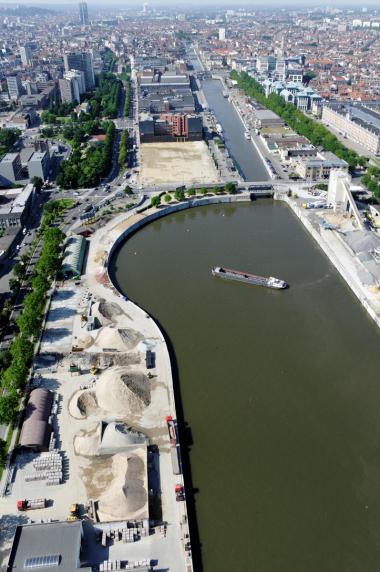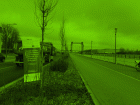
2012-11-07 - The minister-president of the Brussels-Capital Region revealed today the name of the author of the future master plan for the canal area and presented him to the representatives of the Brussels institutions and to the media. This author is the internationally renowned architect-townplanner-landscapeplanner Alexandre Chemetoff.
International procedure and first-class teams
Alexandre Chemetoff has been chosen after an international competition launched by the minister-president because important urban planning, socio-economic and demographic issues are at stake is this area. The European call for tenders launched in July 2011 attracted 17 candidates, from which 3 prestigious international and multidisciplinary teams were selected in October 2011 to propose a draft master plan.
As final winner, the “Groupement Alexandre Chemetoff & Associés” (Alexandre Chemetoff & Associés, Idea Consult and Ecorem) will prepare the master plan for the canal over a period of 9 months. The implementation of the master plan could then be supported for a further three years period. Alexandre Chemetoff was involved in the construction of a district of 50,000 dwellings in Bordeaux, the master plan for the redevelopment of the Île de Nantes and the master scheme for the Plateau de La Haye in Nancy.
Shared vision for a strategic area
The management of the challenges in the central part of the Region, on both sides of the canal. requires an integrated plan for this area, leading to a clear, shared vision for this part of the city, which falls within the Regional Sustainable Development Plan currently on the drawing-board.
During the last years, private investments have indeed continued and reinforced the effects of the several initiatives developed by the public actors in this area over the past twenty years: district contracts financed by the Region, infrastructure development with support from Beliris(1), dwellings built with the support of the Brussels Regional Development Agency (SDRB-GOMB), projects supported by the European structural funds, and so on.
There are thus many developments in progress in this high-potential area, but there is still no common plan. This is why a structured urban vision is needed that underpins and complements existing initiatives. The area’s territorial and social cohesion can be improved by developing a long-term urban ambition: a position shared by all the stakeholders and an instrument that combines public and private actions in the short, medium and long term.
To do this, the master plan needs to examine and analyse the area’s capacity for transformation, propose an innovative approach for this transformation, and define the conditions for implementation. It mustoutline existing and future initiatives for the canal area, monitor coherence between projects andencourage close collaboration between the various players in the area. It must also be set up as a plan that evolves in line with the transformation of the area and the needs of residents.
(1) Cooperation agreement between the federal state and the Brussels-Capital Region for initiatives that support Brussels’ international role and its position as a capital city.
















